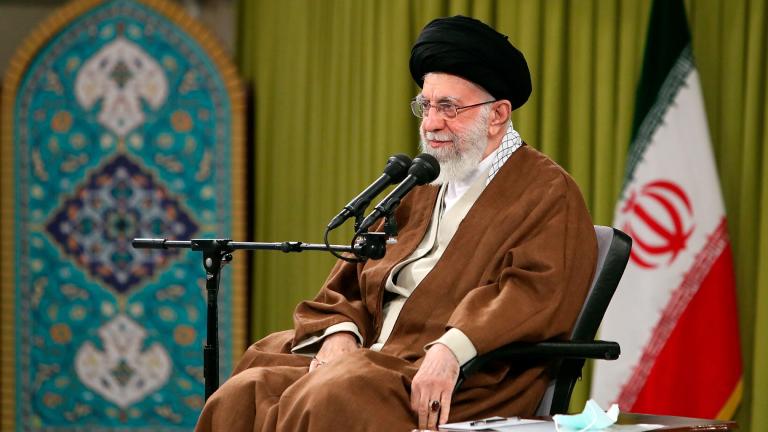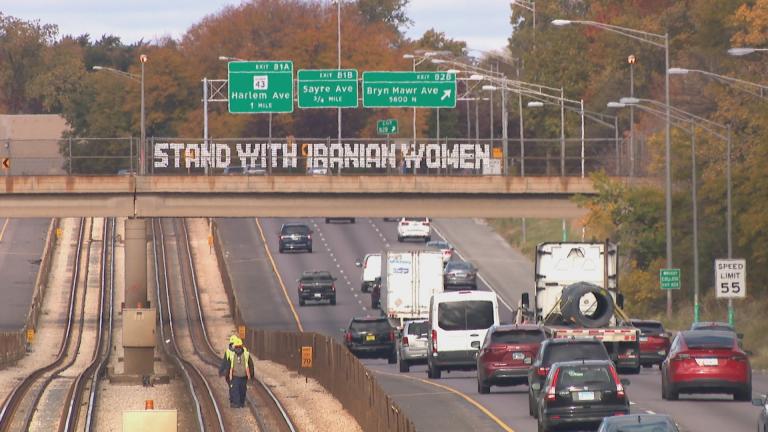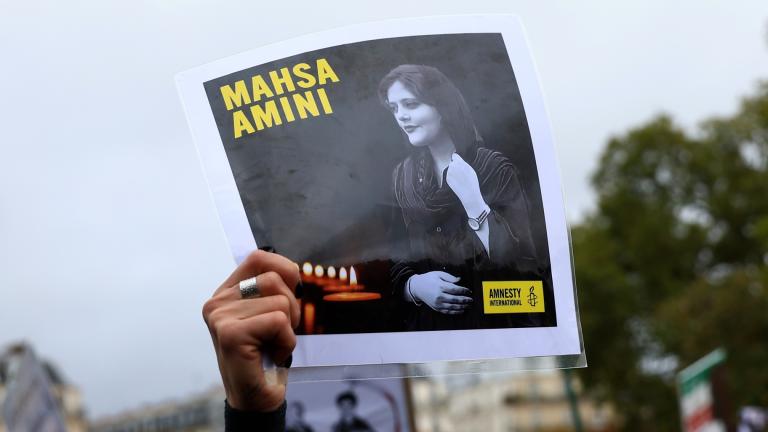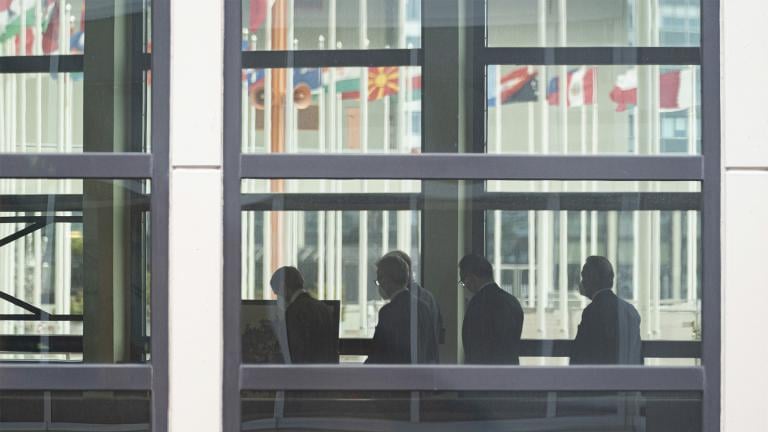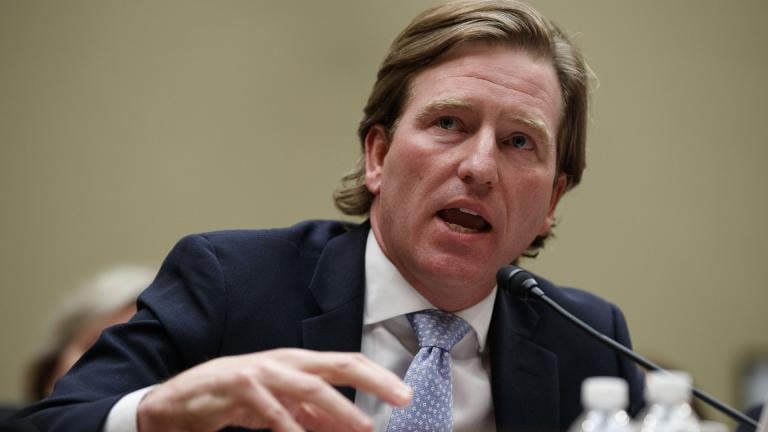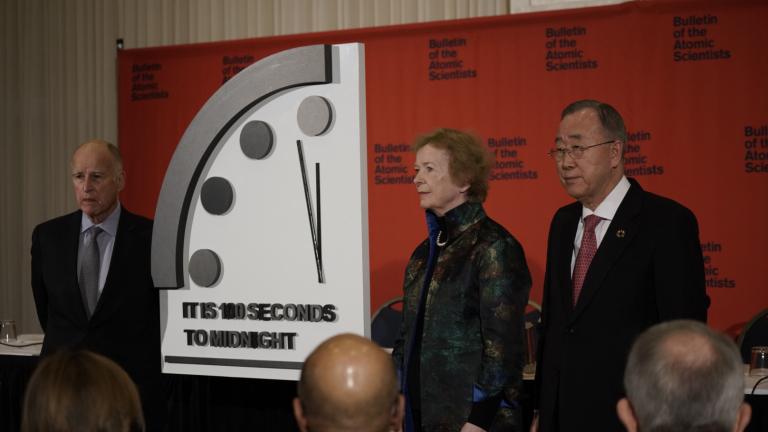VIDEO: Joining “Chicago Tonight” to discuss the protests in Iran are Jacqueline Saper, an Iranian American writer, activist and author; Ali Tarokh, a former political prisoner turned activist; and Mateo Mohammad Farzaneh, associate professor of history at Northeastern Illinois University. (Produced by Jennifer Cotto)
(CNN) — Protests continued across Iran on Sunday despite a government crackdown and state media reports claiming that demonstrators have put an end to their rallies.
The protests were triggered by the death of 22-year-old Mahsa Amini, who died in a hospital three days after being apprehended by the morality police in Tehran and taken to a “re-education center” for not abiding by the state’s hijab rules.
Protests have since then taken place in more than 40 cities, including the capital Tehran, with dozens reportedly killed in clashes with security forces. At least 1,200 were arrested, according to state-backed media.
Rallies that started with calls for justice for Amini’s death have morphed into a larger protest, uniting an array of social factions and classes, with many calling for the fall of the regime.
Here’s what you need to know about the protests:
What’s different about the current protests?
Today’s protests aren’t unlike earlier anti-government movements, but the core issues driving today’s mobilization are different, experts say, arguably making them more significant.
Earlier waves of protests — in 2019, 2021 and more recently this year — were primarily fueled by economic grievances, says Esfandyar Batmanghelidj, founder and CEO of the Bourse & Bazaar Foundation in London, adding that it was one of the main reasons protests did not cross over to other segments of society.
“This is different, because what people are really asking for is a more significant kind of political change,” said Batmanghelidj, adding that this movement has made it easier to “generate solidarity among different social groups.”
Today’s protests are also amassing younger Iranians with internet access who haven’t known an Iran before the Islamic Republic, said Sanam Vakil, a senior research fellow for the Middle East and North Africa program at Chatham House think-tank in London.
How secure does the government feel now?
The government doesn’t appear to feel more vulnerable than before, said Trita Parsi, vice-president of the Quincy Institute in Washington, DC. “And they may be miscalculating here.”
Observers expect protests to escalate. On Sunday one of Iran’s main teachers’ unions called for a nationwide strike. Workers’ strikes are sensitive in Iran because they bring back memories of the 1979 revolution, when collective labor action acted as a useful tactic that helped bring down the Shah.
“I think it is quite likely that we will see more strikes because the strikes were happening even before this [movement],” said Parsi. “They may end up being mutually reinforcing,” he said, adding that strikes could add more pressure on the government.
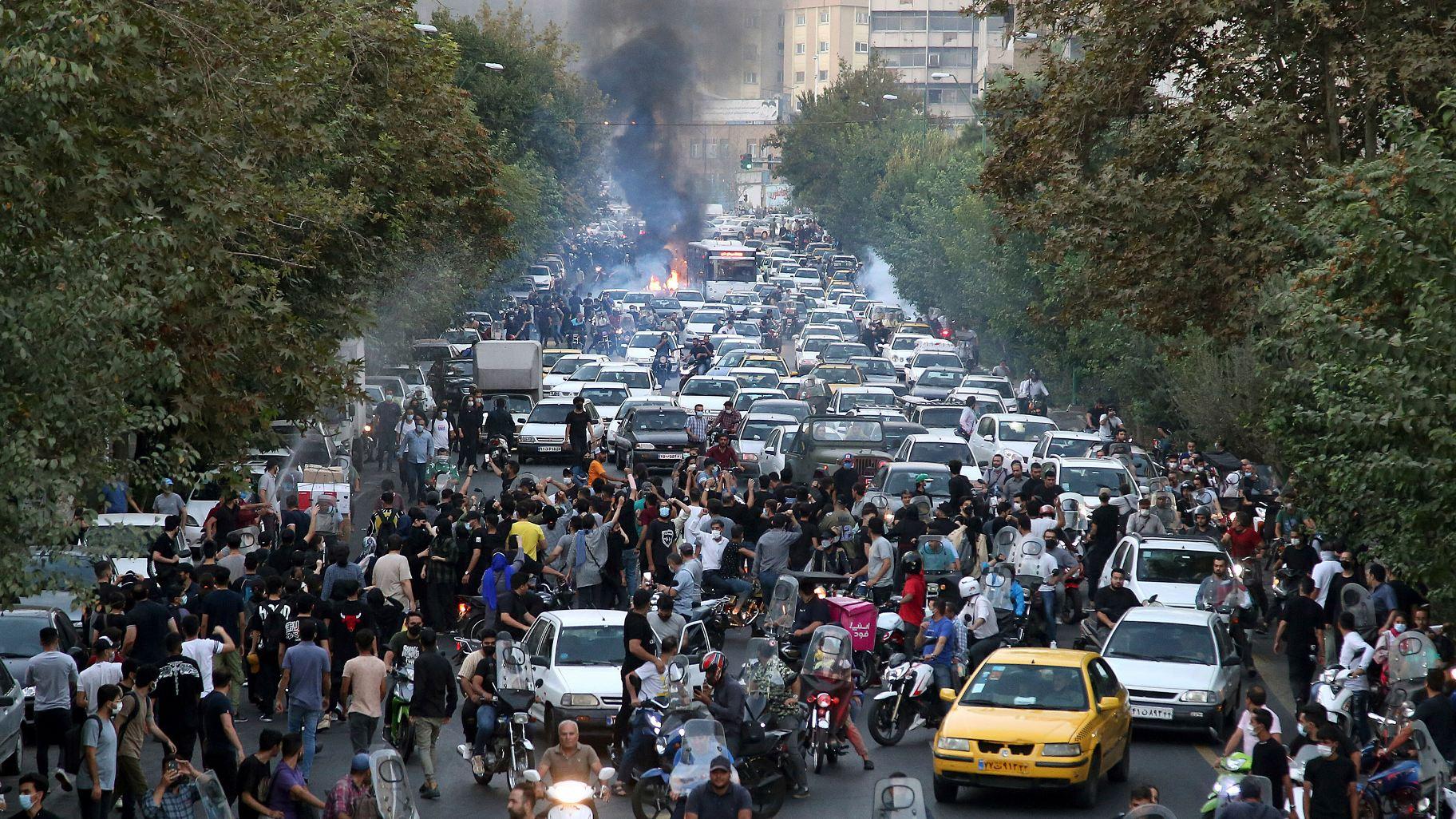 Protesters chant slogans during a protest over the death of a woman who was detained by the morality police, in downtown Tehran, Iran, on Sept. 21, 2022. (Associated Press)
Protesters chant slogans during a protest over the death of a woman who was detained by the morality police, in downtown Tehran, Iran, on Sept. 21, 2022. (Associated Press)
How likely is the government to make concessions and what would the concessions look like?
An end to the protests is more likely to come through the use of brute force than concessions, say analysts.
The government has blamed Western media for instigating the protests, alluding to foreign conspiracies. Analysts say that determines how they’ll be dealt with.
“If they see this as a security threat and not as an issue of political expedience, then they are more likely to respond using the tools of their security apparatus,” said Batmanghelidj. “The government has far more capacity for repression than it does for reform at this stage.”
Vakil said that even if authorities make concessions through minor reforms, the bigger question will be “how to get those young women to put their hijabs back on.”
A face-saving outcome would be a rollback on the morality police, she said, adding that a complete scrapping of the hijab law is unlikely. A referendum allowing Iranians to vote on the issue of hijab could also help quell the protests, she said, casting doubt on that happening too.
At what point does the government become vulnerable, and how close is it to that point?
Despite ten days of demonstrations that have spread across the country as the death toll has risen, the protests continue to be leaderless, with some of the loudest and most visible proponents of the protests living in exile as the government has restricted internet access at home.
“This is an indigenous Iranian movement,” said Vakil, “and it is important to stress ordinary Iranians inside the country are the mobilizers of what is happening.”
A figurehead would be necessary to both negotiate change with the government as well as internally lead the movement itself, said Batmanghelidj.
The protests have a wide range of grievances, going beyond the compulsory hijab and the brutality of the state’s security apparatus.
It also remains unclear whether there are members within the Iranian government who understand the stakes at hand and are willing to push for significant change within the existing structure of power, added Batmanghelidj.
Note: This story will be updated with video.

